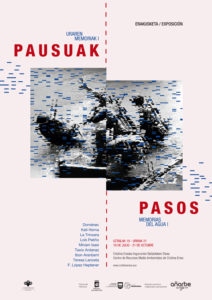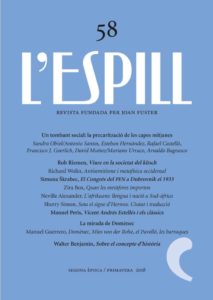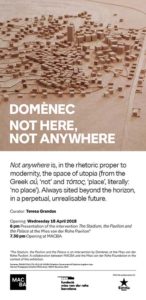Kochi-Muziris Biennale 2018
Possibilities for a Non-Alienated Life
December 12, 2018–March 29, 2019
Kochi, India.
Expanded artist list
Aernout Mik (Netherlands), Akram Zaatari (Lebanon), Arunkumar HG (India), Anju Dodiya (India), Annu Palakunnathu Matthew (India/US), Anoli Perera (Sri Lanka), Araya Rasdjarmrearnsook (Thailand), BV Suresh (India), Bapi Das (India), Barthélémy Toguo(Cameroon/ France), Bracha Ettinger (Israel/France), Brook Andrew (Australia), Chandan Gomes (India), Chitra Ganesh (USA/India), Chittaprosad (India), Dennis Muraguri (Kenya), Domenec (Spain), EB Itso (Denmark), Goshka Macuga (Poland/UK), Guerrilla Girls (USA), Hassan Khan (Egypt), Heri Dono (Indonesia), Ines Doujak + John Barker (Austria + UK), Jitish Kallat (India), Julie Gough (Australia), Jun Nguyen-Hatsushiba(Japan/Vietnam), Juul Kraijer (Netherlands), KP Krishnakumar (India), Kausik Mukhopadhyay (India), Madhvi Parekh (India), Marlene Dumas (Netherlands), Martha Rosler (USA), Marzia Farhana (Bangladesh), Mrinalini Mukherjee (India), Mochu (India), Monica Mayer (Mexico), Nathan Coley (UK), Nilima Sheikh (India), Otolith Group (UK), PR Satheesh (India), Pangrok Sulap (Malaysia), Prabhakar Pachpute(India), Priya Ravish Mehra (India), Probir Gupta (India), Radenko Milak (Bosnia and Herzegovina), Rana Hamadeh (Netherlands/Lebanon), Rehana Zaman (Pakistan), Rina Banerjee (US/India), Rula Halawani (Palestine), Santu Mofokeng (South Africa), Shambhavi Singh (India), Shilpa Gupta (India), Shirin Neshat (Iran/USA), Shubigi Rao(Singapore), Song Dong (China), Sonia Khurana (India), Subhash Singh Vyam + Durgabai Vyam (India), Sue Williamson (South Africa), Sunil Gupta + Charan Singh (India/UK), Sunil Janah (India), Tabita Rezaire (France/French Guyana/South Africa), Tania Bruguera (Cuba), Tania Candani (Mexico), Tejal Shah (India), Temsuyanger Longkumer (India/UK), Thomas Hirschhorn (Switzerland/France), VALIE EXPORT (Austria), Veda Thozhur Kolleri (India), Vicky Roy (India), Vinu VV (India), Vipin Dhanurdharan (India),Vivian Caccuri (Brazil), Walid Raad (Lebanon/USA), William Kentridge (South Africa), Young-Hae Chang Heavy Industries (South Korea), Zanele Muholi (South Africa)


